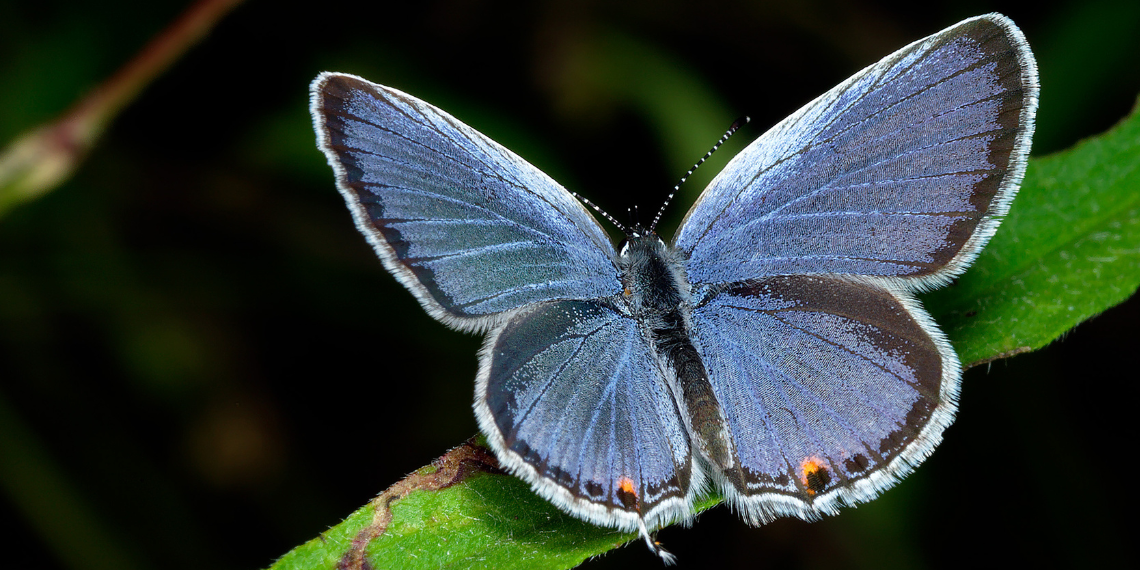From Genes to Geography: Mapping Butterfly Diversity in North America

There’s a world in the details of a butterfly’s wing — or, more precisely, in its DNA.
Using snippets of mitochondrial DNA from butterfly specimens collected across Canada and the United States, researchers from the Department of Integrative Biology have been able to map the broad lines of their genetics on the continent.
“We have a classical idea of butterfly diversity based on their physical characteristics,” says the study’s lead author, Dr. Jacopo D’Ercole, a post-doctoral researcher in Dr. Paul Hebert’s group in the Centre for Biodiversity Genomics. “However, we now have a vast amount of georeferenced genetic data that we can also use to map the distribution of diversity in space, essentially creating a ‘genetic atlas.’”

Checkered skipper
The method used by the team of researchers is known as DNA barcoding, which involves sequencing a section of the CO1 gene found in the mitochondria. Just like a retail barcode identifies a particular item, DNA barcodes are unique and can be used to identify organisms.
“The CO1 gene is particularly informative,” explains D’Ercole. “There is enough diversity in this gene to both tell species apart and assess diversity within a single species.”
Leveraging the large amount of barcoding data collected for North American butterflies — covering about 90% of all species on the continent — they performed detailed analyses of the spatial distribution of genetic diversity for each species. When pooled together, striking patterns emerged: the southern US and northwest corner of the continent displayed high, spatially segregated genetic diversity. These findings are thought to be linked to geological glacial cycles.
“High diversity in the south was expected because it is a known glacial refuge, where species diversified simply because they spent more time in this region,” explains D’Ercole. “We also observed this pattern near the Rocky Mountains, where cold-adapted species likewise found refuge and survived the glaciations.”

Gulf fritillary
Observing similarly high diversity and spatial structure in the northwest corner of North America, however, is evidence of a northern glacial refuge known as Beringia.
“The pattern of genetic diversity found in Beringia actually mirrors that found in the south,” says D’Ercole. “And while the southern and mountain-related patterns also appear in Europe, the occurrence of a northern refugium is unique to North America.”
In addition to allowing researchers to map the genetic diversity within species and uncover evolutionary patterns on a continental scale, DNA barcoding can also reveal incongruences with traditional morphology. When these arise, targeted work can be undertaken to reassess specimens and perhaps even redefine the boundaries between species.
“Since there is a generally consistent 2% threshold in barcode sequence divergence between butterfly species, DNA barcodes can help us resolve classification uncertainties,” says D’Ercole.
Ultimately, D’Ercole hopes that the level of analysis that was made possible by DNA barcoding on butterflies will be replicated in other taxonomic groups.
“We are accumulating barcode data at a high rate,” he explains. “Extending this type of analysis to other taxa will allow us to compare broad patterns of diversity.”
With barcode technology at our fingertips, the DNA in the wings of butterflies — or the antennae of ants — is a world just waiting to be explored.
This study was funded by the National Sciences and Engineering Research Council of Canada.
Read the full study in the journal PLOS One.
Read about other CBS Research Highlights.